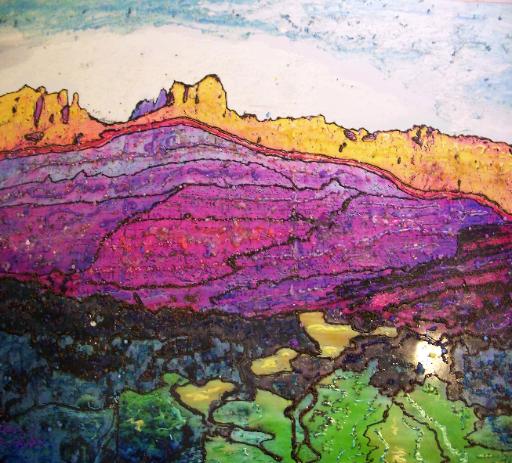Monday’s Art Marketing Action newsletter about artist ethics created a stir in some circles. William Pilch took issue with this:
1. Don’t copy someone else’s art and try to pass it off as your own. Painting directly from photographs that were taken by someone else is not only unethical, it’s a copyright violation.
What I should have said is:
1. Don’t copy someone else’s art and try to pass it off as your own. Painting directly from photographs that were taken by someone else is not only unethical, it might be a copyright violation.

William was right that I should have double checked on my wording before issuing the newsletter. So I consulted with attorney Kevin Houchin to get the skinny. He says this.
If the photograph is not in the public domain, and the painting does not add substantial additional artistic expression (basically the difference between “copying” and “inspiration”) then the painting is a derivative work from the photo. If the painter does not own the photo, or does not have permission, then we’re looking at a possible copyright infringement.
It’s kind of a gut check on the copying v. inspiration, and it’s important to note that it’s not the “subjective” intention of the painter, but rather the opinion of a (an artistically challenged) Judge or Jury that will make that call on if there is enough additional artistic expression.
There’s no % or other objective standard. It’s case-by-case.
Bottom line: Ethically, it’s always best to use your own photos or to get permission to use someone else’s. Legally, it’s up to a judge or jury.
Image ©William Pilch, Along the Canyon Walls.



7 thoughts on “Ethics and Using Other People’s Photographs”
How would this apply to art students who are instructed to study and even copy the Masters in order to learn more about themselves and their own art?
To answer Sarah: Copying of a work protected by copyright for educational or personal purposes is not a violation. That means a student can copy and exhibit a work with no penalty. It could even become part of a museum retrospective, but not offered for sale. Any sale or public display of the copy for other than educational purposes could be a violation. This would apply mostly to stuff produced in this and approximately the last third of the last century. Prior to that, most visual works were not protected in the United States, and of those that were, a good many have since become part of the public domain. Anything older than 100 years is almost certainly public domain. In any event, it seems to me always ethically correct to credit the original artist: “Joe the Artist, from Dali,” would be one way.
Plenty of artist use photographs as inspiration and even use the source…think Andy Warhol made a career out of this. For me personally I find it a much more rewarding experience recording from life. What we see with our eyes first hand is far different than what any lens can capture. Art derived from photographs tends to have a static feel to it. BobbyM
…years ago a council of artists in Canada were in an uproar because Robert Bateman openly copied from his own photographs of wildlife…it was decided he should be referred to as a ” naturalist ” rather than as an ” artist ” …I cannot find the citation online because it was before the internet, but the method of working directly from photos, even your own, has many question marks, in many realms , for many…(if anyone finds the article, do tell…)
I think you have an amazing blog! I am an art consultant and I only wish more consultants would read your posts. I have also started my own blog and was wondering if you would be interested in a link exchange with my blog and/or gallery website. You blog is an amazing resource for anyone in the art industry.
Sarah: Walter is correct that for educational purposes, it is fine. However, I’m not so sure that everything that predates the latest copyright law is in the public domain. I think some artist trusts (e.g. Andy Warhol) and artist families are going back through and copyrighting much of their stuff. Walter: Oh no! We have Joe 6-pack, Joe the Plumber, and now Joe the Artist?! I think it’s more commonly written like this: “Walter Hawn after Dali.”
I’d like to add (correct me and direct me [to links with info] if I’m wrong) but other people’s art (photography related) can be used in another persons art IF copyright permissions are awarded.
Photo sites, such as Fotolia, allow purchase for reselling. I’ve seen people resell the photo in its raw format however, personally I don’t think you can call yourself an artist in that regard (only a reseller of art).
I do photo editing and manipulation and I don’t have the time (or resources) to take all the photos that I would like to (however, very capable) so I utilize services like Fotolia. By the time I’m finished with the original photos you wouldn’t even know they are the same.
If I didn’t alter the original photo as much as I do I would feel guilty (forget copyright laws- its morals and honour for me) but this is a win win situation for everyone in the case of purchasing photos for reselling; the photographer makes money and I make money.
– copyright laws are messy – I’ve seen art with pages of magazines and other items that were actually created by other people.
Sometimes I wonder if I’m going to have to pay royalties for rearranging the alphabet [that someone else created] to compose something new.
🙂